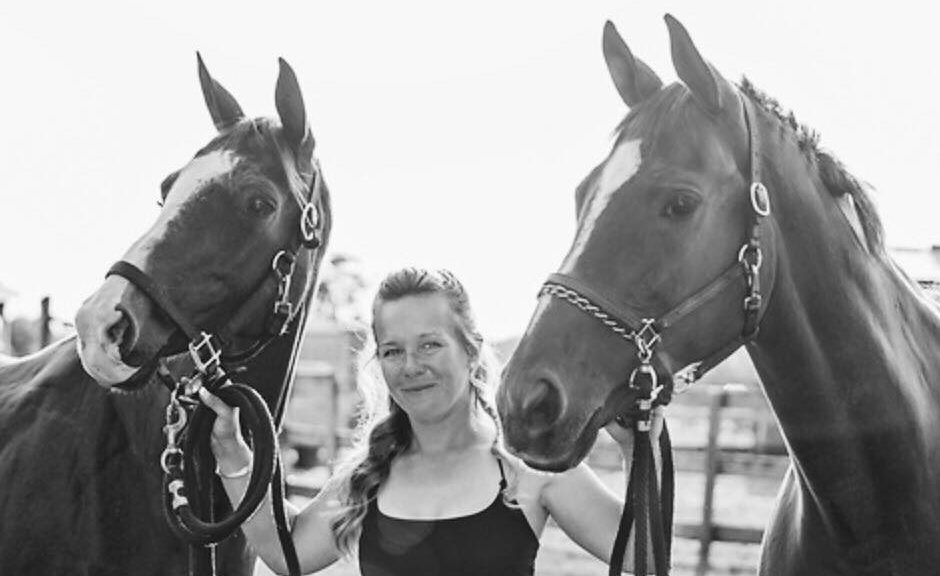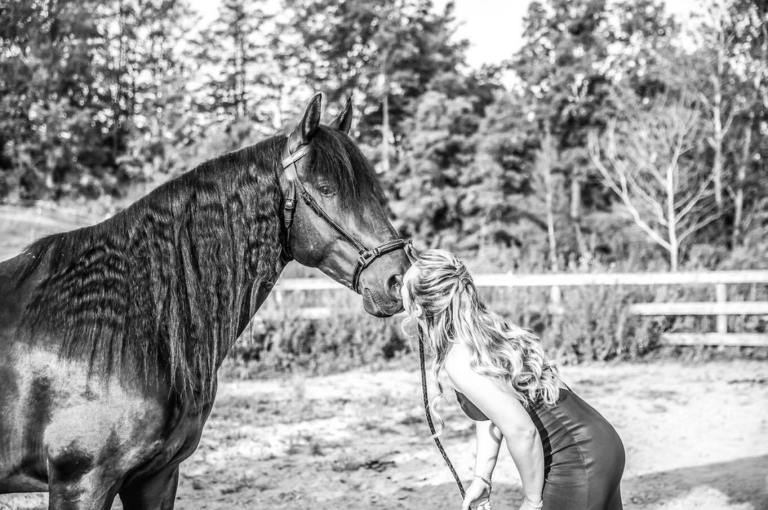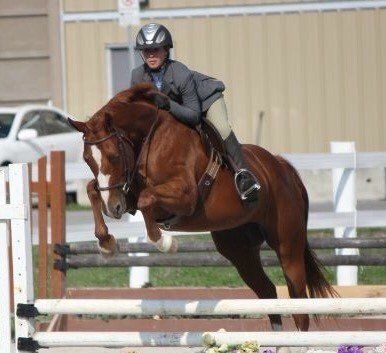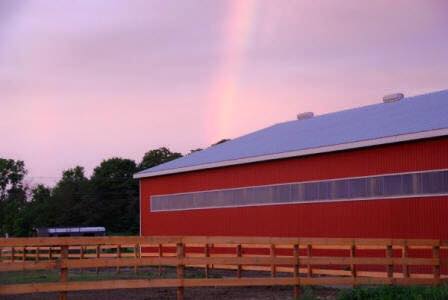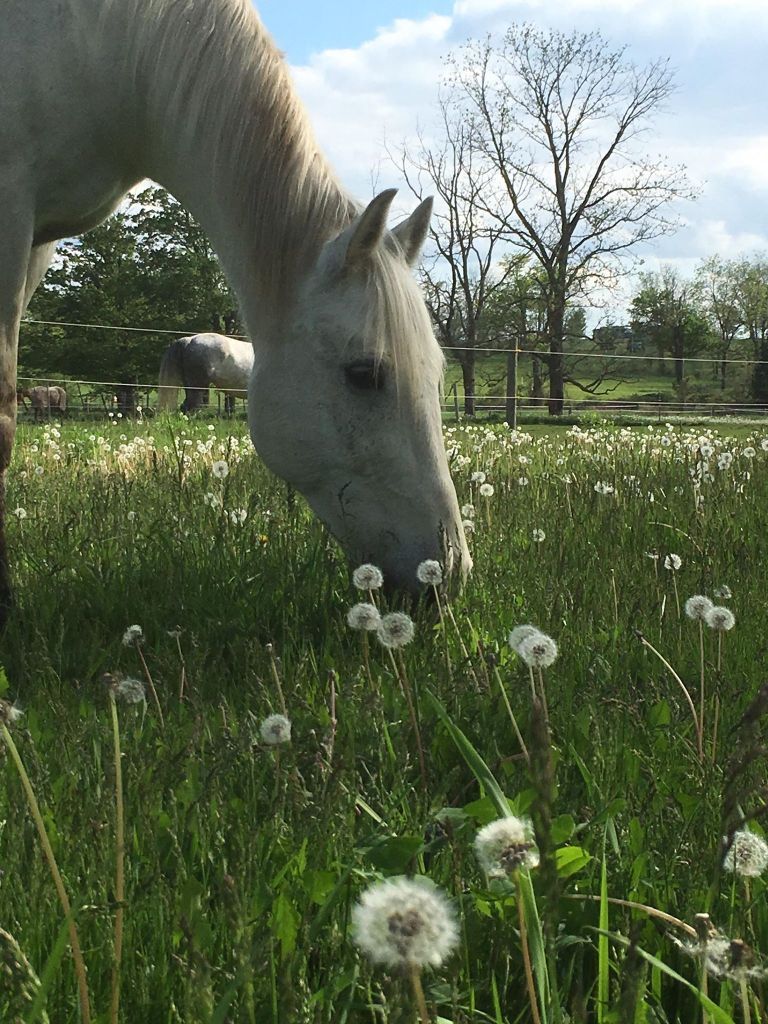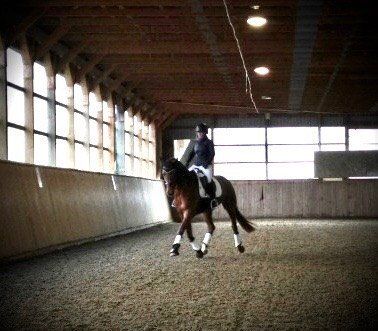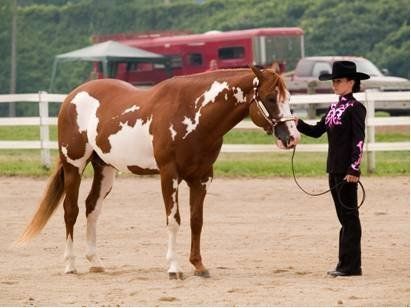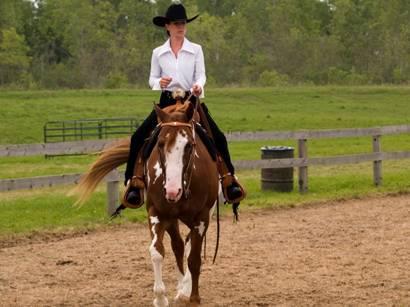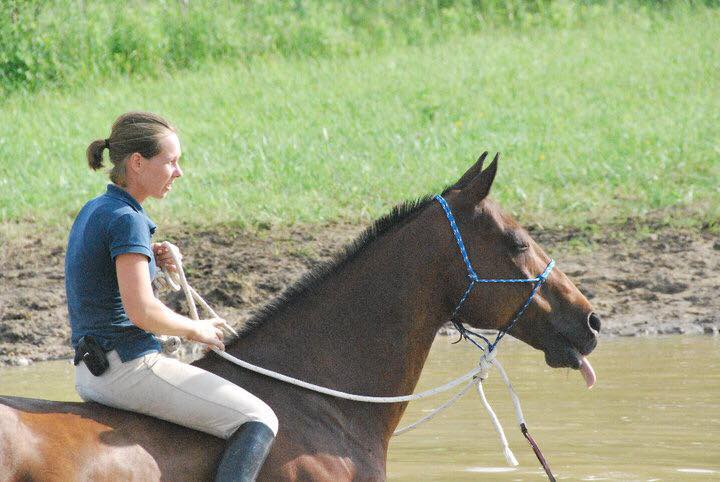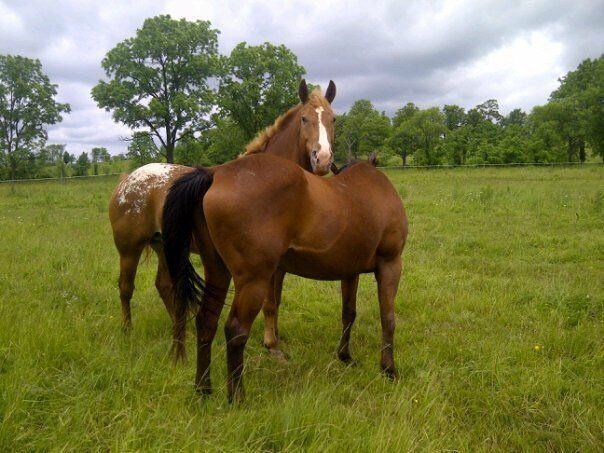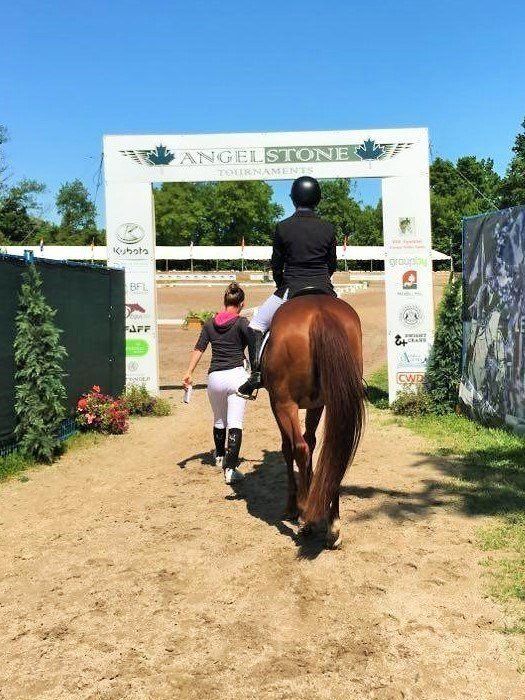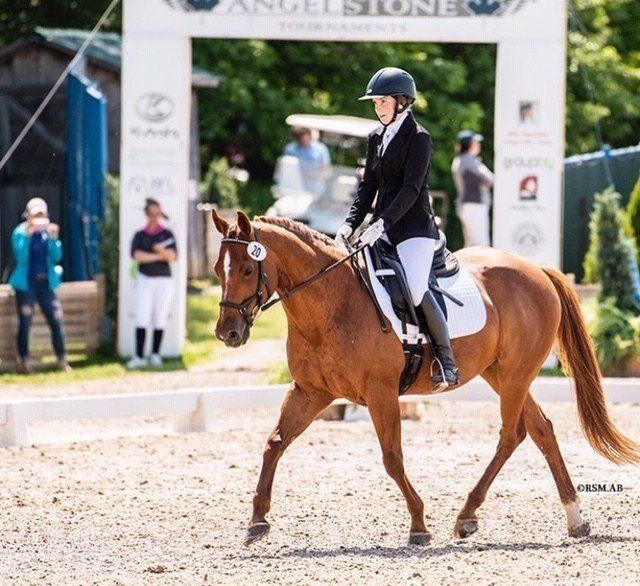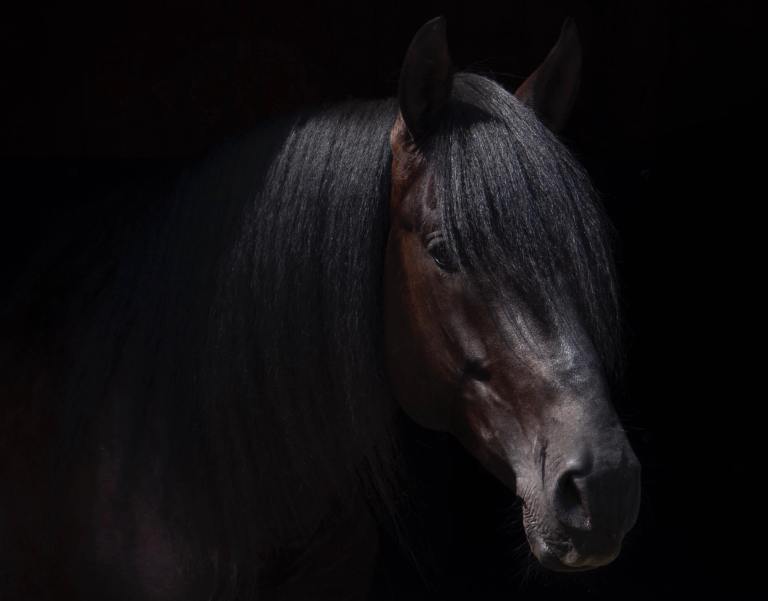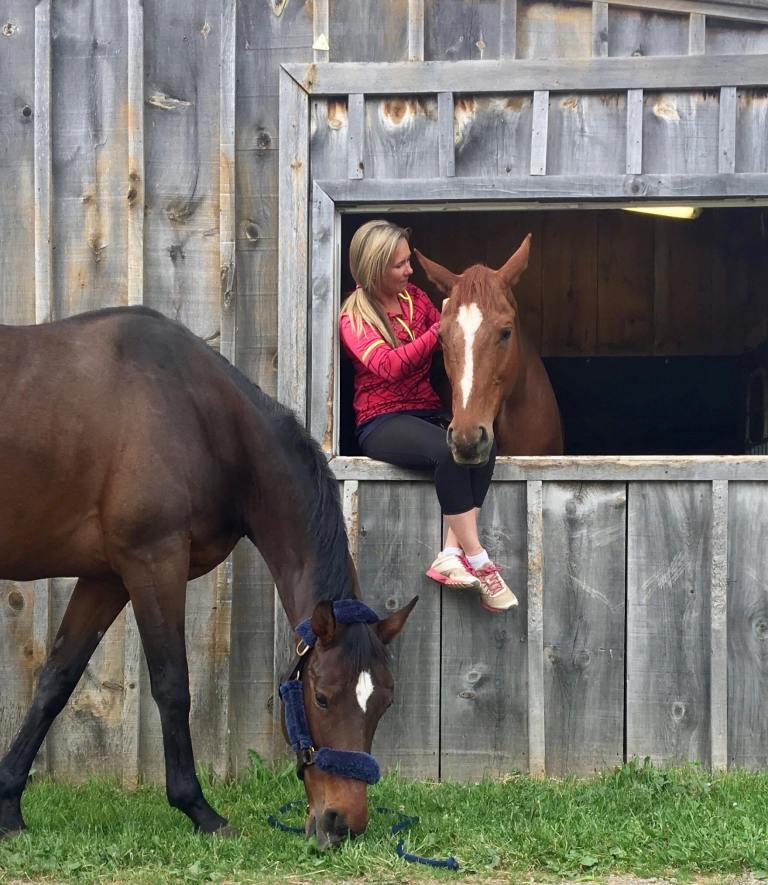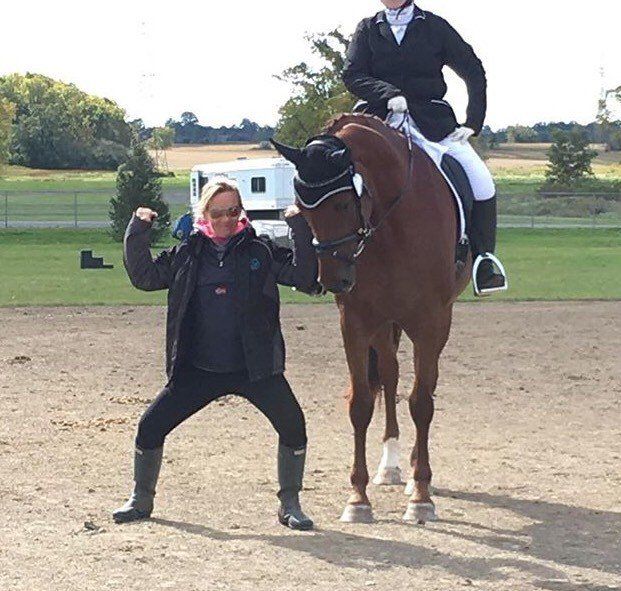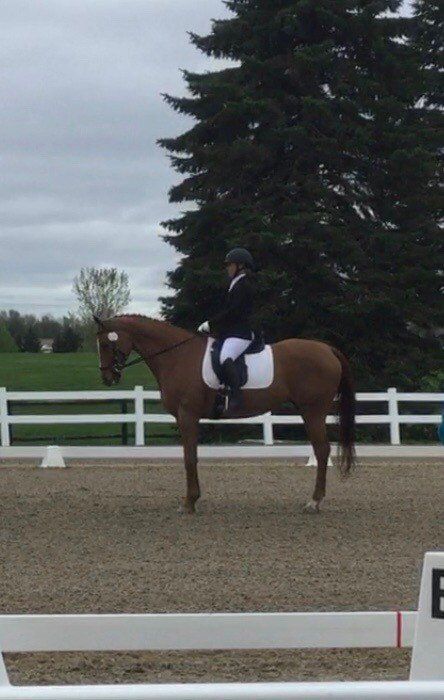Equestrian Blogs
The Heart Horse
Equestrian Profile: Ashley Van Der Hout, Part 1
JULY 10, 2020 | THE HEART HORSE
What Horses Mean to Ashley
To start the interview I ask a somewhat challenging question: what do horses mean to you?
After a brief pause Ashley says, “That’s a hard question. To be quite honest…that’s a hard question. You’re going to make me cry.” With a tear in her eye she says, “Companionship. Partnership. Loyalty. Trust. Basically the world.”
The Beginning of Ashley's Equestrian Career
“My family is from Germany. My Godmother had horses before I was born, and we traveled to Germany twice a year. I started riding there and my uncle in Germany said that, at the age of 4, I had natural ability. So then I continued.”
Ashley realized she wanted a career in horses just before the year 2000.
“2000 I went to Kentucky for blacksmithing. That’s when I changed the direction of my career.”
Prior to blacksmithing Ashley had been pursuing a career as a correctional officer. Why blacksmithing? “Because it was a challenge. And it was a male-dominated occupation.”
Ashley eventually became known as one of the best blacksmiths in her area, proving she could excel in a career that is traditionally male-dominated. She still blacksmiths from time to time, but she eventually stopped pursuing it as her primary career when she opened her current facility.
How Kings Meadow Came to Be
She says it was a “spur of the moment” decision.
“I came to a point in my life where I had to make it or shut shop. I looked at the same facility that I did 5 years prior and I dug my heels in and said yes.”
She laughs, “Now 13 years later I’m still doing renos, still upgrading…but it’s a lot easier now.”
Despite the level of work required to build the business to where it is today, the high quality of care offered at King’s Meadow has been evident from the beginning.
“I bought it in August, I was full by the end of September, and I’ve been full…and over full,” she laughs, “ever since.”
But what is the future for Kings Meadow? I ask Ashley what her dreams and goals are for the facility.
“My biggest goal is I just want to see my riders, and their horses or ponies, excelling. I need to see that progress. I think that’s my biggest goal for doing this barn. To see the progress.”
Multidisciplinary Approach
For example, Ashley is a firm believer in the value of high-quality ground work.
She also uses ground work as a solid foundation to support the training of her riding horses. “All the lateral work and everything that you would do under saddle I’ve taught already on the ground.”
However, Ashley explains that you can’t just have one way of approaching training. “You can’t always just use natural horsemanship, or any one technique, because not every horse is the same. Every horse is different.”
To compliment her English, dressage, and horsemanship training, Ashley also experimented with Western disciplines.
“Western was just fun to me, but then I had a stallion that was Western and English. I showed him English, Western, halter, and horsemanship.”
“Reining is one discipline that I tried, but I would love to keep doing…It’s dressage gone Western…or Western gone dressage.”
Without a doubt, the horses and riders under Ashley’s instruction benefit from her multidisciplinary experience.
I asked Ashley how she acquired all of this experience. She explains that while she did work with a variety of trainers, a lot of it was trial and error.
“My first horse was a bucker, a bolter, and a rearer.” She laughs, “So we did a lot of training. I’ve always been attracted to the hot-headed horses, the higher maintenance horses, the harder to handle horses. With them you can’t just have a one track mind.”
In other words, working with challenging horses forced Ashley to get creative.
Ashley's Heart Horse
With a tear in her eye Ashley admits that this bucking, bolting, and rearing horse was her heart horse.
His name was Shimel (April 1994-June 2016), show name King Lucky Winter.
Though it is still difficult for her to speak of Shimel, Ashley agrees that sometimes the horses that challenge you the most are the ones that stay with you the longest.
Ashley's Definition of Good Horsemanship
When I ask Ashley what good horsemanship means to her, she gives it some thought and then says:
"Know what the right thing to do and the wrong thing to do is."
We both start laughing. How exactly do you know the right and the wrong thing to do?
“I think the biggest thing is knowing when to push and pull with a horse.”
At this point I’m very intrigued and ask, “but how do you know when to push and when to pull?”
“Comes natural.”
I ask if it’s something people can learn.
“Yes, for sure. Will it come naturally? No. Will they learn how to read a horse? Yes. Will they know 100% every time to read a horse? Maybe not.”
Ashley explains it’s a matter of being able to read and understand the characteristics or personalities of multiple different horses and knowing what to do with that personality.
“As much as you want to read a book or Google…you have to be natural at it. There has to be some instinct. It’s not just reading the eyes, the lips, or the ears. It’s reading everything else.”
I ask if she can explain the importance of learning to read our horses.
“Because they read us. They are reading us every single second that we have them. So we need to read them.”
Bad Fit Does Not Mean Bad Horse
As well, Ashley explains that part of reading a horse is recognizing whether the horse is thriving in its current training program.
“Just because they can’t talk to us…verbally can’t talk to us…[doesn’t mean you can’t read when something isn’t a good fit].”
“Horses are the same as people in that they don’t get along with everyone, and they don’t like certain things. So we can’t devalue a horse because they’re not going to be able to do the hunters or the jumpers or dressage.”
Throughout our discussion, Ashley accentuates that the value of a horse should not be entirely based on their abilities in the discipline the owner has chosen.
If something isn’t a good fit, it is better to allow the horse a different life. Just because they can’t do a certain discipline doesn’t mean they’re not a good horse.
How Ashley Manages Expectations for Horses in Training
Although many clients have high expectations for their horses, Ashley tries to be as honest as possible about their potential.
For example, when I first told Ashley I wanted to do dressage with Huxley she said, “You want to do what?! I really don’t know, he’s a quarter horse, he’s 15.1…”
She says, “Well, as time went by, he proved me wrong. But that’s also your doing. If the owner is not willing to help and continue, trainers can’t push that horse.”
Ashley never gave up on Huxley (or me), but she was honest with me that Huxley may not be able to do it.
Because of this honesty I knew how much hard work and patience it was going to take, and Ashley and I were both pleasantly surprised each time Huxley exceeded our expectations.
Ashley's Favourite Thing About Coaching
Ashley says her favourite thing about coaching is watching the progress.
“Whether it be horses or riders. Seeing them improve as months go on. When people want to start at the top it’s a lot harder to stay at the top. You’ve got to start from down and work your way up.”
She also takes pride in the development of skilled and thoughtful riders.
“If you have that $100,000 pony that’s going to take you around, you’re not going to be a good rider. You can sit that horse, but that horse is now doing your job.”
“I need to make riders…you know what I mean? Ride. Not sit there, but ride.”
Her Biggest Challenges and Perspective on Failure
Next I ask Ashley what her biggest challenge has been.
“Since I started the business young, the challenge was the politics in the industry. At such a young age I was self-conscious of whether I was going to fail or not, and I was worried about what people were saying.”
“Now it doesn’t bother me. I had a big back bone, but this business made me have a bigger one.”
She explains that there are challenges in everything:
“Every day is a challenge whether it’s big or small. Without a challenge of some sort, my days would be boring.”
“Everything that I’ve tried new there was always a challenge to it…it never came easy. Life is a challenge. I didn’t become a blacksmith, a trainer, a coach, or a barn owner because it was easy. “
I ask if she has ever failed. She says with a laugh, “No. I’m still standing!”
The Accident
The fact that she is still standing is an accomplishment in itself considering what she has overcome.
Unfortunately, in May 2010, Ashley was involved in a freak accident. Although she states that the accident was not a challenge per se, it was certainly a test of her grit and determination to overcome any obstacle.
“I decided to help the workers and turn out one of our 18hh Clyde-cross school masters. Little did I know the horse in the adjacent paddock came at us over the fence and my horse retaliated behind my back.”
“My arm became twisted in the lead rope, my horse spooked away from me, and the lead rope tightened around my arm.”
The horse then dragged her 67 feet across the paddock.
“She stepped on my chest, leg, and face, causing severe head trauma. I was hospitalized for 5 days. After reconstructive work in hospital I had two more reconstructive surgeries, rhinoplasty and septoplasty.”
The Aftermath
“The effect it had on me was pretty hard.”
“To this day I am still hyper-sensitive of individuals handling horses properly. People take these animals for granted. Even if they’re the quietest, gentlest horse they can turn on a dime.”
“This mare was not by any means aggressive to me – [but] at her size and weight she could’ve easily killed me with stepping where she did.”
“It really didn’t affect my business that much. It was an eye opener for clients and students that anything can happen. So it did put some fear in the young eyes.”
“My clients were amazing during my time in the hospital. They pulled together and continued the farm while I was in hospital and once I was back.”
“My memory wasn’t the greatest after the accident due to the head injury. Memory exercises helped a lot but it still isn’t back to what it was before the accident.”
“That took a lot out of me, understanding why I had to make notes or someone else had to remind me. When clients rely on me to remember the littlest things or changes…it made my days much longer.”
Bravely, Ashley admits that the accident took a toll on her mental health.
“I struggled with PTSD for a long time. Nightmares, flashbacks, followed with anxiety. The anxiety comes back under stress when in confined situations with horses. I’ve learned to control and ‘hide’ my anxiousness.”
While she recovered, Ashley recognized the potential impact on her horses.
“I do a lot of training in hand with problematic horses, so I’m in control during these times. But this training had to slow down to a degree to bring myself back with confidence to teach confidence to the horses.”
I ask Ashley if she ever had to cope with fear after the accident.
She says, “I had no fear. I was more aware of how fast situations can change regardless of the size of the animal.”
How She Got Through It
“Dealing with horses as my lifestyle and career I couldn’t sit in a corner and hope for the best.”
“I was told to start medication, but that it would make my PTSD symptoms worse before they got better. I tried for under two weeks, and ‘making it worse’ was an understatement.”
“From that I pulled myself together and looked at what I had accomplished and what I wanted to achieve in my life, pushed through every day like nothing was wrong. Hid all emotions until I woke up one day nightmare free.”
“Every day I wake up, I look in the mirror, and am reminded of what happened and what could’ve happened.”
She says, “Challenges make me a stronger and confident person with success at the end. BRING IT ON! Oh yeah, I’m ready!”
What Ashley is Most Proud Of
I ask Ashley what she is most proud of, and initially she started telling me about the accomplishments of other people. I then clarify and say, “No, what are you most proud of for yourself?”
Her answer? “Being successful.”
Measuring Success
If success is what she is most proud of, how does she measure her success?
“You can’t measure success. Success is all personal goals, I think. I don’t have an empty barn. I have low turnover!”
She laughs, “I have clients coming from years ago, returning clients, or clients that have never boarded their whole lives anywhere but with me, leave and do it themselves for years, and then come back and trust me and my staff. Seeing students returning.”
“Without advertising and without pushing Kings Meadow, I hear people saying positive things about my business.”
Taking Pride in the Success of Others
Before stating that she was most proud of her own personal success, Ashley intended to say that she is most proud of her vet, Dr. Amy Bennett.
“She has impressed me over the years of knowing her in developing a backbone. She has now turned out to be a phenomenal vet, and she still to this day says, ‘you taught me to have a backbone, you taught me how to be black and white, you taught me how to be stronger than my clients, and to deal with hard clients.”
“That’s something that she had a challenge with. So to help somebody and to still be recognized for that…that’s a huge thing.”
Ashley did a write-up about Amy that contributed to her winning the Rising Star Award through the Ontario Veterinary Medical Association in 2017. Amy now owns her own equine veterinary practice, Bennett Equine Veterinary Services, and is Ashley’s primary vet at Kings Meadow.
The Impact of Motherhood
Next I ask Ashley if becoming a mom has changed her relationship with horses.
“Yes…in a way. I would love to say I’m a little more cautious of the horses I get on…but not really” She laughs.
“I think now more about when my daughter is going to ride, and how I’m going to feel about her riding. It’s a lot harder, it’s a lot busier.”
“My weakest point of being a business owner is time management. So…the time management, yes it’s gotten better, but now you’re putting a 16-month old in the mix with a full-time, 7-day per week business.”
“My biggest weaknesses are time management and saying no. Those are the two biggest things!” She laughs.
Her Biggest Strengths
When she admits her weaknesses I feel compelled to ask, what are her biggest strengths?
“Not showing my emotions…and I’m pretty good at reading people. Knowing how to deal with all the different personalities. The different types of people and making everybody happy…which you can’t all the time, but I think I do a pretty good job!” She laughs.
Personal Goals
When she admits her weaknesses I feel compelled to ask, what are her biggest strengths?
“Not showing my emotions…and I’m pretty good at reading people. Knowing how to deal with all the different personalities. The different types of people and making everybody happy…which you can’t all the time, but I think I do a pretty good job!” She laughs.
Finally, I ask if Ashley has any personal goals or dreams for her own riding.
“Well, I’m almost 40. The biggest thing on my bucket list as my goal…I want to do 1.45m course. Just one round.”
I think this is such a cool goal.
She continues, “but other than that, on a more realistic note…maybe in the next 10 years…go bigger, maybe a bigger facility. Or go smaller and focus just strictly on me.”
Conclusion
Although I have known Ashley for several years, I learned so much from speaking to her in this interview.
It is clear that she will do anything to succeed. She is a strong, determined person with high standards for herself and others. She will undoubtedly continue to find success in whatever she chooses to pursue.
It takes great courage to share personal stories the way Ashley did in this interview. Readers, I hope you take inspiration from Ashley’s journey and treat her story with the respect it deserves.
(NOTE: this blog has been reproduced with permission from The Heart Horse.)
Read: the Equestrian Profile with Ashley Van Der Hout, Part 2
